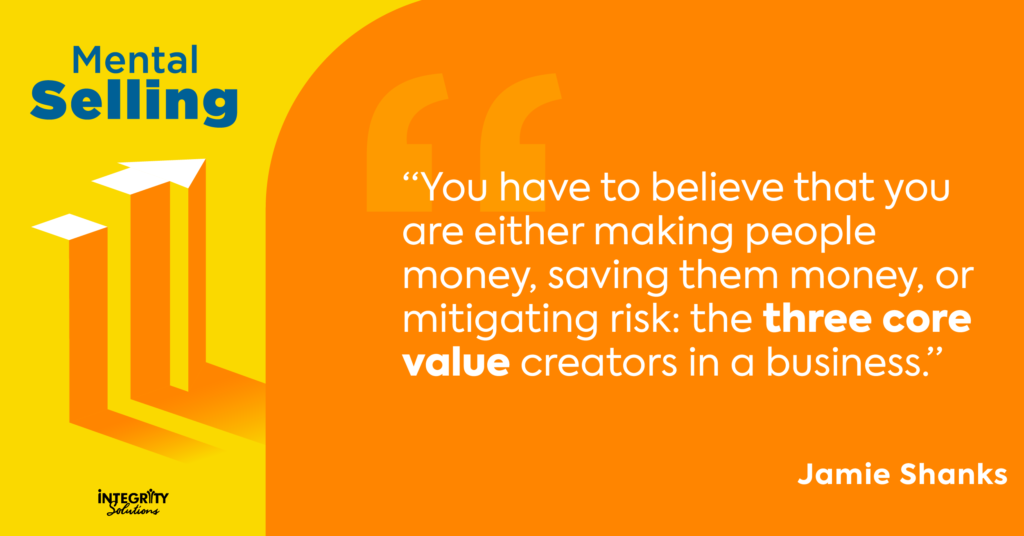What Is Cold Calling (and How to Address Your Sales Team’s Aversion To It)?

What is cold calling and what does it look like in the current sales world? Your mindset may actually be the key to success.
If you want to hear salespeople groan, mention cold calling. It’s true that cold calling can be hard, grinding-it-out work, and the rewards aren’t instant. But sales prospecting is the bread-and-butter, core activity that leads to sales growth and success — and cold calling is one of the most effective prospecting strategies available. While many people blanch at the thought of making cold calls, the (consistent) practice is vital for any sales-focused organization.
But it doesn’t have to be the task that everyone dreads. By helping your salespeople get into the right head space and equipping them with some new skills and tools, you’ll not only reduce their call avoidance; you’ll enable them have more productive conversations that will boost their confidence and conversion rates and create stronger relationships with the customers you’re eager to help.
What is Prospecting, Anyway?
At Integrity Solutions we define prospecting as the process of proactively identifying
and contacting potential customers whose problems you can help solve. That’s somewhat different from the preconceived notions many people have about prospecting, and it’s an important mindset shift for most salespeople. While prospecting is indeed part of the larger sales process, the goal of prospecting, as we’ll discuss further, is not to “close deals”; it’s to create enough awareness, interest and connection to secure a second conversation.
OK, So What is Cold Calling Then?
Cold calling refers to sales outreach (often historically via phone but now through other means as well) to prospective customers who haven’t previously expressed an interest in the company’s solutions and haven’t been contacted by a rep in the past. While you’ve done the research and found that they’re a good fit for your solutions, the call is considered “cold” because the prospect does not have a “warm” connection to you. In other words, they haven’t done things like fill out a form on your website, attend a webinar, engage with you on social media or shown any intent to purchase.
While we typically think of cold calling in terms of phone calls, depending on the industry, it can also involve digital outreach and even in-person visits. For example, in the medical devices or pharmaceutical industries, cold calling has often been synonymous with “dropping in.” In either case, because these prospects aren’t expecting to be contacted and there’s been no prior communication or established connection, salespeople are often reluctant to call them, assuming they’ll be facing a lot of rejection.
Part of the reason for this for this assumption — and part of the reason cold calling has such negative connotations — is that many reps don’t do the research and preparation ahead of time to create a compelling value proposition or set up and conduct an effective call. Even though the call is “cold,” that doesn’t mean you should be going into it cold, with no information on the prospect and their business. When that’s the case, cold calling becomes just another form of spam.
Some level of rejection is certainly to be expected, but it’s also important to remember what you’re trying to accomplish with cold calls. The goal, especially in the initial stages, isn’t to push product or make a sale. It’s to engage in a conversation that builds awareness, trust and earns the salesperson the right to ask questions and get a better understanding of needs. Period. If you’re cold calling effectively, you are creating an impression in that prospect’s mind not just of a product or service you have to offer, but how the brand promise of that product or service can mitigate risk, solve problems and even enhance their ability to attract and serve their customers.
In other words, cold calling isn’t an instant, close-the-deal scenario. Instead, it’s a critical part of the value creation process. It’s warming up the prospect and helping them recognize your brand in the first place, creating affinity for that brand and ultimately recognition of the value of what they could gain from your solutions in the context of their pressing business problems. Doing this effectively takes the right communication skills and the right mindset. As “The Sales Hunter” and bestselling author Mark Hunter puts it, you need to think not in terms of closing a deal but in terms of opening a relationship. Big difference…
There Are Benefits to Cold Calling
We’ve established that it’s not a quick fix and that rejection is always going to be part of it. So, why do it? Is it worth the time and effort? And is cold calling really still a necessity in today’s environment, where there are so many digital communication channels available for outreach, and buyers have access to so much information at their fingertips?
The short answer is yes. Top salespeople recognize that they can’t just sit back passively and wait for the phone to ring or the LinkedIn connections and email requests to come in. We know that 82% of prospects say they still accept meetings with salespeople who reach out to them- IF the message and value proposition is personalized and applicable to their challenges and needs.
In B2B, roughly 85% of your engaged contacts are now anonymous (and they want to stay that way as long as possible). Buyers are upwards of 70% of the way through the buying process before ever engaging with a salesperson. In other words, if you do wait for a prospect to contact you they probably already have pretty fully-baked opinions about you and your competition- opinions that can be hard to budge. To get out in front of creating the narrative with prospects, effective salespeople take advantage of all the tools at their disposal; they don’t rely on those systems to do their job for them.
They also know that it’s worth it to pursue a conversation, because a cold call is often the stepping stone to converting a lead into a customer. Particularly with complex sales, these early conversations can be pivotal in helping a salesperson qualify a lead and better understand a prospect’s business and needs. Through this process, they establish a human connection that no amount of technology is going to replace.
Cold calling also gives salespeople the opportunity to sharpen their skills and become more comfortable asking good questions, listening actively to uncover needs and engaging with different kinds of people. The more practice they have, the more confidence they’ll build. Over time, they’ll also gain new insights into market trends, common pain points and how their solutions fit into this broader context. This can be helpful in shifting their frame of reference from being internally focused on presenting product to being externally focused on value.
78% of decision makers have taken an appointment or attended an event that came from an email or cold call.
DiscoverOrg
And lastly, cold calling can also lead to referrals- an essential source of new opportunities for salespeople. While upwards of 90% of customers are willing to provide referrals if they’ve received value and had a good customer experience, research shows that referrals are THE most underutilized source in prospecting, with only 11% of salespeople regularly asking for them. Referrals are not limited to existing customers. When done well, cold calling can lead to referrals (either within the account or elsewhere). Just ensure your efforts are focused on truly adding value and creating a compelling value proposition, not just asking “who should I speak with about….”
Preparation for Cold Calling Begins With Mindset
The salesperson’s mindset is one of the most powerful determinants of cold calling success. There are many mental barriers that can get in their way before an initial connection is even made. These barriers can largely be divided into a salesperson’s view of prospecting and view of their own prospecting abilities.
For example, we’ve found that there are a number of commonly held beliefs that impact sales performance, and these can be particularly amplified when it comes to an activity like cold calling, which comes with its own baggage.
Beliefs influence behaviors, so if a salesperson believes that they’ll be bothering someone by contacting them, or if they’ve decided that they’re just not good at cold calling, they’ll avoid doing it. If they believe that cold calling is about manipulating someone into buying what they’re selling, they’ll likely rattle off product features and benefits without doing the work to understand what’s actually important to the prospect.
And if they think cold calling is a waste of time, they might reach out once to see if there’s any interest, but if they don’t get an immediate “yes,” they’ll leave it at that — and feel validated in their belief that cold calling doesn’t work. Similarly, if a salesperson doesn’t believe they come across well over the phone, they will likely rely more heavily on email.
This is why mindset is so powerful. These beliefs can become self-reinforcing boundaries that limit someone’s ability to make any headway. However, the right mindset can be just as powerful as an enabler of success.
Reshape Your Cold Calling Mindset
Cold calling is about solving problems, not touting your products and services. You’re there to open a relationship, not close a deal. That mindset will reshape how a salesperson approaches cold calling and what steps they’ll take.
To get into the right headspace for cold calling, consider the following mindset principles:
- Invest in your success. Prospecting is an investment in your success. Once you see prospecting as a critical component driving in your performance, you’ll be much more likely to hold space and time for this activity.
- Connect, don’t sell. Prospecting is NOT about selling. So take the pressure off and focus on connecting and building rapport.
- Prioritize cultivating your expertise. Knowledge is mission critical to cold calling. People expect you to have basic knowledge of what they do and the challenges they face. Prospecting requires market knowledge. There’s no getting around doing your homework.
- Know the value of your solutions. Be sure you understand your unique value proposition in the market relative to that customer’s industry, company size, etc. .
Another important point that Ryan O’Hara reminded us of: “Everyone acts like prospecting is binary — there’s sending and not sending. It isn’t. It’s more than that. It’s sending well vs. not sending well.”
In addition, keep in mind that cold calling will mean leaving LOTS of voicemails. When you do finally get hold of someone, there will be natural skepticism and even potentially annoyance. Their immediate reaction is not about you, but about the busyness of business (and some personal baggage they carry about previous bad sales experiences). The key is to focus on picking up on their Behavior Style quickly so you can respond accordingly.
Setting Goals for Cold Calling Success
Goal-setting helps you build personal accountability and aids in building confidence and finding a rhythm that works. Set the stage by carving out time to do the research and identify your Ideal Customer Profile (ICP). Also understand how cold calling fits into the entire marketing and business development cadence: Getting a prospect from “cold” to warm” requires multiple touches (often 10-12 touch points or more) and multiple types of touches (email, phone, LinkedIn, sometimes by texting) within a given timeframe. With the right mindset- and learning that they need to fish with a spear and not a net- salespeople will quickly discover that a strategy of both consistency and precision allows them to be much more effective and productive.
Tips for effective goal setting:
- Set a realistic cold call outreach goal per day, balancing pre-work and research with outreach. And don’t be overly optimistic—be realistic about the number of touches you can comfortably make. Focus more on quality over quantity.
- Schedule the time, even if it’s only in 15-minute increments, and hold yourself accountable. You’re more likely to be willing to spend shorter bursts of time cold calling than if you’re staring at a half-day block of time on your calendar.
- Practice persistence (without being a pest). The objective early on is about gaining trust & credibility- even when you’re not getting responses. They might not be responding (yet), but they often are reading or listening.
- Focus on playing the long game. Cold calling and prospecting are not something you can jump in and out of when it’s convenient. Maintain momentum and consistency. Stop for a while and one thing is clear- you won’t pick up where you left off.
- Set goals for breaking through to the account, not just individuals. Selling can only happen when there is commitment to change, and today that involves working with an ever-growing array of stakeholders and influencers within buying committees. Set goals to create visibility, credibility and connection with multiple people within an account knowing that any one of them can become an internal advocate or champion for what you have to offer.
Understanding and Connecting With Your Prospect
Because prospecting is about proactively identifying and contacting potential customers whose problems you can help solve, you need to find out what’s important to your audience, especially based on the level of their role. For example, what’s important to the CEO (customer experience, competitive differentiation, mission and vision) will be different from the CSO/CRO (sales/revenue effectiveness and efficiency, customer retention & expansion) and HR (people and compliance, company culture, retention).

Then consider, what are the common threads affecting their industry? Is there something that connects with your prospect from the research you’ve done? The purpose is to get time on their calendar — and to plant seeds, including your expertise in a particular space and reasons they should consider acting now on the challenges they’re facing.
Be conscious of the spacing (the time gap between contact attempts). Striking a balance is essential. The optimal spacing is 2 days between attempts. This gives prospects time to breathe in between touch points — to not forget you but also not get annoyed by you either.
Developing an Expert Sales Prospecting Team
Cold calling and prospecting are part of the end-to-end customer journey. And just as much attention has to be paid to creating an impressive and positive customer experience from those first touch points as they do post-sale.
Not all salespeople are cut from the same cloth. And depending on things like their tenure, territory, current book of business and even other factors like whether they’re extroverted or introverted, their prospecting needs and tools they leverage will vary. But make no mistake- every salesperson needs to consistently cold call. Without exception. Assuming cold calling is for newer salespeople or that casting cold calling aside for months when they’re busy serving existing customers is a recipe for (future) disaster.
Loop in Marketing to share what’s working, what content and messaging has resonated well- and what hasn’t- and what questions and objections come up in response. This can lead to both greater collaboration and a steady stream of related content and sales enablement assets that will have a greater likelihood of resonating with future prospects.
You should also ensure that part of the sales training you provide around prospecting and cold calling includes regular peer sharing and discussion. Sharing successes, commiserating over inevitable failures and generally having a supportive team of accountability partners that can learn from one another “lifts all boats.”
Similarly, a sales leader’s coaching efforts should not be about the “numbers” of cold calling but rather about the salesperson’s attitudes, motivations and confidence (or lack thereof) around their recent cold calling efforts. Like anything else in sales, changing habits starts with changing mindsets and beliefs. Otherwise the necessary activities- no matter how clear the case is made to do them- simply won’t happen.
Cold calling isn’t dead. It’s not about being a nuisance. It’s not about finding just anyone who will talk to you or “playing a numbers game.” And it’s certainly not about immediate gratification or return. It’s about deliberately and strategically breaking through the noise we all experience every day by having a compelling message, adding value, showing you can solve problems and staying top-of-mind for when that future customer is ready to begin forging a mutually beneficial relationship.

Chief Marketing Officer
Related Blog Posts




